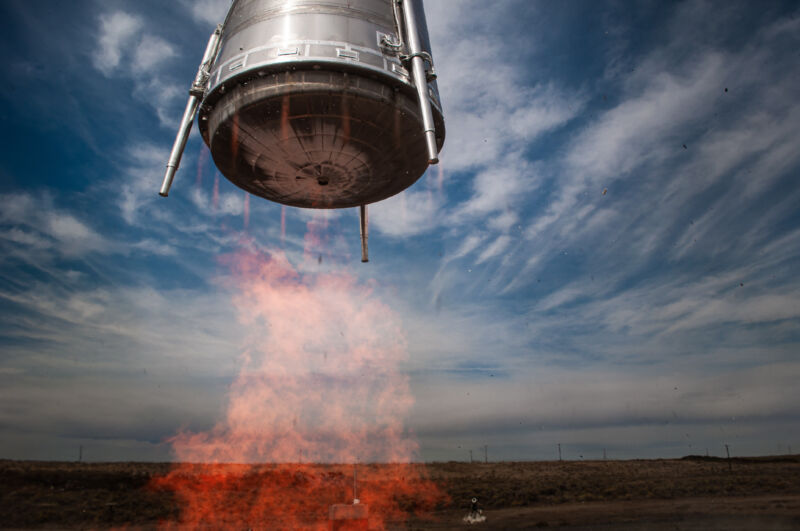Welcome to Edition 6.14 of the Rocket Report! The big news this week is that Stoke Space, which is seeking to build a fully reusable rocket, has secured a significant amount of funding that should help it get closer to a debut launch within a couple of years. I also like the name they've chosen for their rocket—Nova.
As always, we welcome reader submissions, and if you don't want to miss an issue, please subscribe using the box below (the form will not appear on AMP-enabled versions of the site). Each report will include information on small-, medium-, and heavy-lift rockets as well as a quick look ahead at the next three launches on the calendar.

Stoke Space raises $100 million, names rocket. On Thursday afternoon, the small launch company announced it had secured $100 million in new funding, bringing the total amount raised to $175 million. The new Series B investment is being led by Industrious Ventures with participation from the University of Michigan, Sparta Group, Long Journey, and others. Stoke intends to use the funding to finance the development of its first-stage rocket engine and structure, the orbital version of its reusable second stage, and new construction at the historic Launch Complex 14 at Cape Canaveral Space Force Station, Florida.
A rocket finally gets a name ... Stoke has also finally revealed the fully reusable small rocket's name: Nova. This refers to an astronomical event in which a new star is born from the combination of remnants of old stars. "Our vehicle designs build on the ideas and achievements of prior generations. The name Nova is a way to honor that past heritage while looking ahead to a very exciting future," said Andy Lapsa, CEO and co-founder of Stoke Space. The company recently demonstrated a 'hop' capability with a prototype of its rocket's upper stage.
Vega C return to flight mission delayed again. The return to flight of Europe’s Vega C small launch vehicle has slipped to late 2024 after the European Space Agency concluded an investigation, Space News reports. The European Space Agency announced this week that the completion of an independent study into an anomaly confirmed the Zefiro 40 nozzle must be redesigned.
Returning to the original Vega ... The Zefiro 40 rocket motor failed during a launch attempt in December 2022. Before the Vega C return to flight, there will be two launches of the original version of the Vega, which does not use the Zefiro 40 motor as a second stage. The first is scheduled for October 6 and will place into orbit the THEOS-2 Earth observation satellite for Thailand; and the second, and final, Vega launch is scheduled for the second quarter of 2024. Its payload has yet to be identified. (submitted by buddy, Ken the Bin, and EllPeaTea)
Rocket Lab opens new engine facility. The launch company has opened a new engine development center in a building that, six months earlier, was the headquarters of a competing launch company, Virgin Orbit, Space News reports. The 13,400-square-meter facility will be used for production of both the Rutherford engines used on its Electron rocket and larger Archimedes engines it is developing for the Neutron rocket. Virgin Orbit filed for Chapter 11 bankruptcy in April, and Rocket Lab acquired the lease on the building, along with the machinery and equipment inside, in May.
Enabling faster execution ... Adam Spice, Rocket Lab’s chief financial officer, said that the biggest impact of the purchase is “de-risking” the schedule for scaling up engine production. “Things that we were thinking we could probably get done in 12 to 18 months, well, it’s done. So really it was more of a timeline and uncertainty shrinker, if you will,” he said. “Getting stuff for 16 cents on the dollar didn’t hurt as well.” Spice said the company is already producing parts for the Archimedes engine and over the previous weekend started moving the production line for the Rutherford engine into the new building. (submitted by Ken the Bin and EllPeaTea)
Germany moves to competitive launch procurement. After decades of Arianespace serving as the primary rocket vendor for all European nations, Germany is seeking to take a different approach to buying launch services. The country will pursue a competitive procurement process when purchasing launch services for its satellites and intends to use its position within the European Space Agency to advocate that the agency does the same, European Spaceflight reports.
Not entirely altruism ... Germany adopting this stance is significant as the country is one of the two primary contributors to the Ariane 6 rocket, which Arianespace is actively marketing to European nations and international customers. Moreover, for 2023 at least, Germany is the largest contributor to the ESA budget. Of course, there are some ulterior motives. Germany is home to some of the most promising European launch startups, boasting the likes of Isar Aerospace, Rocket Factory Augsburg, and HyImpulse. (submitted by Ken the Bin)
French aviation company talking to Rocket Lab. The French industrial firm Dassault Aviation is studying the potential development of a reusable space transportation system to launch satellites into low-Earth orbit. The company's design consists of an airborne reusable hypersonic vehicle and a subsonic carrier aircraft.
Powering the space plane from New Zealand ... According to The Letter A, one of the companies Dassault is talking to is Rocket Lab, which potentially could supply rocket engines for the space plane. It is not clear how far along the discussions are or how committed to the project Dassault is. But this would represent a nice diversification opportunity for Rocket Lab if it comes to pass. (submitted by BJ)



3175x175(CURRENT).thumb.jpg.b05acc060982b36f5891ba728e6d953c.jpg)


Recommended Comments
There are no comments to display.
Join the conversation
You can post now and register later. If you have an account, sign in now to post with your account.
Note: Your post will require moderator approval before it will be visible.